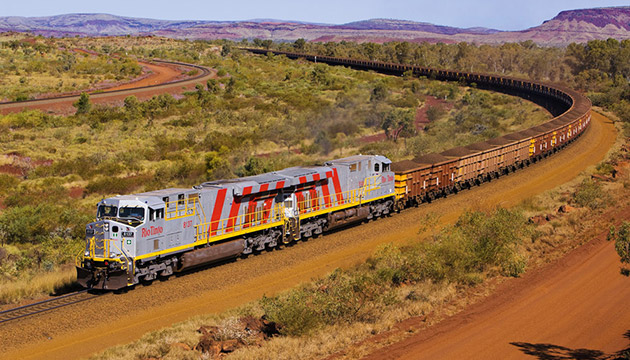Australia currently has the world’s longest, heaviest trains and we are shifting 1.4 billion tonnes of freight by rail each year – more than ever before. But many believe there’s a lot more that rail could do.
Story By Ken Eastwood
A steel revolution is taking place. Heralded by a distant clickety-clack and the grinding of metal on metal, Australia’s railways are awakening to a new era. New railways are being built, and old tracks are being modernised and consolidated to make them suitable for today’s needs.
If roads are the choked arteries of our country, with blockages at vital organs, the railways are the clear-running veins, conveying the pulse of the country and now so much of its lifeblood.
At the moment, more freight is being carried by rail in Australia than ever before – half the country’s freight haulage by weight.
More than 80 percent of that is iron ore and coal, with sugar, bauxite and other bulk freight making up most of the rest.
“We have got the sixth largest rail network in the world,” says the CEO of the Australasian Railway Association (ARA), Bryan Nye. “People say, ‘Oh yes, but it’s such a big country’. Well, the UK moves 1.5 billion people by train every year. Australia moves more than 850 million. But the UK moves 150 million tonnes of freight, and Australia moves 1.4 billion tonnes. By world standards we have the best heavy haul system.”
In November last year, the ARA put out an extensive report, Trainline 2, detailing the vast scope of Australian railways.
It states that we have around 33,000 kilometres of line and more than 2200 locomotives pulling 32,000 wagons. The industry employs some 100,000 people, including on the extensive urban passenger networks. We have the longest (2.7km) and heaviest trains in the world, and the longest stretch of straight track (478 km). And we have at least two world icons in train travel – The Ghan (Adelaide to Darwin) and the Indian Pacific (Perth to Sydney).
We have historic railways that have faithfully carried agricultural produce for generations. In sugar-cane growing areas of Queensland and northern New South Wales, 4000km of small-gauge railways (mostly 60 centimetres wide) carry more than 25 million tonnes of cane to the mills each year – 90% of the crop – keeping an estimated 20,000 trucks off the roads.
The report states that the need for rail will increase, with freight movements predicted to almost triple by 2050. “Getting the transport supply chain right is so important for the success of the agricultural sector and ensuring our farmers can get their products to market efficiently and reliably,” Bryan says. It’s for this reason that the ARA and other groups are pushing for new rail initiatives in Australia, from the proposed inland route from Melbourne to Brisbane via Parkes, as well as the updating and consolidating of rail infrastructure across the land. “Sixty percent of freight from Sydney and Melbourne going west to Perth goes by rail,” he says. “But Melbourne to Sydney only 10% does, and that’s what needs to change.”
In the exciting mineral boom in the Pilbara, the innovations being undertaken in rail are “world leading”, Bryan says. For example, Rio Tinto is currently undertaking a trial of driverless trains, controlled from a centre in Perth, 1000km away. “We’re running trains now with axle loads of 42 or 44 tonnes,” Bryan says. “We’re doing things that the rest of the world is only looking at.”
This Story is from Issue #99
Outback Magazine: Feb/Mar 2015










